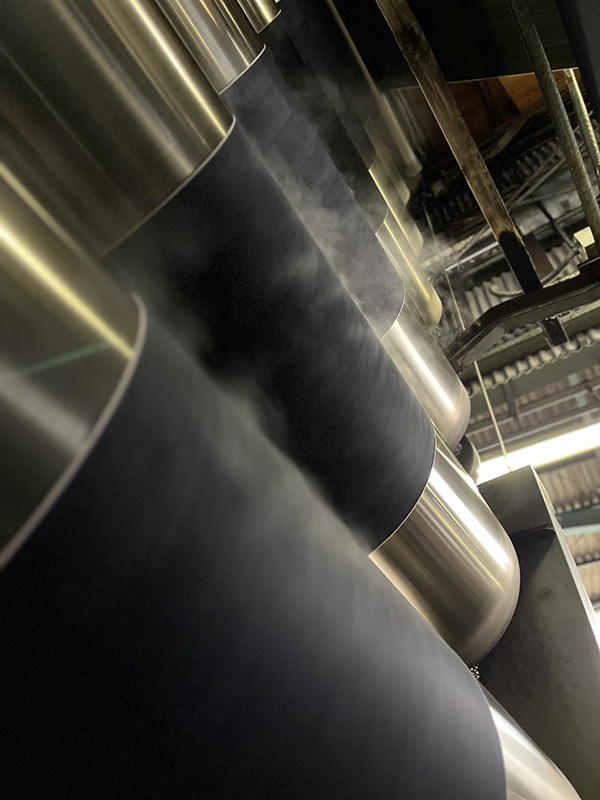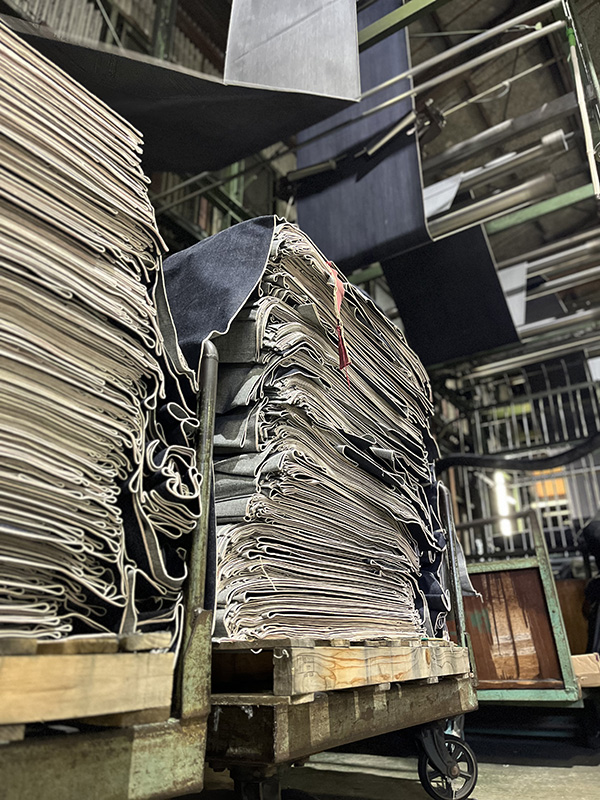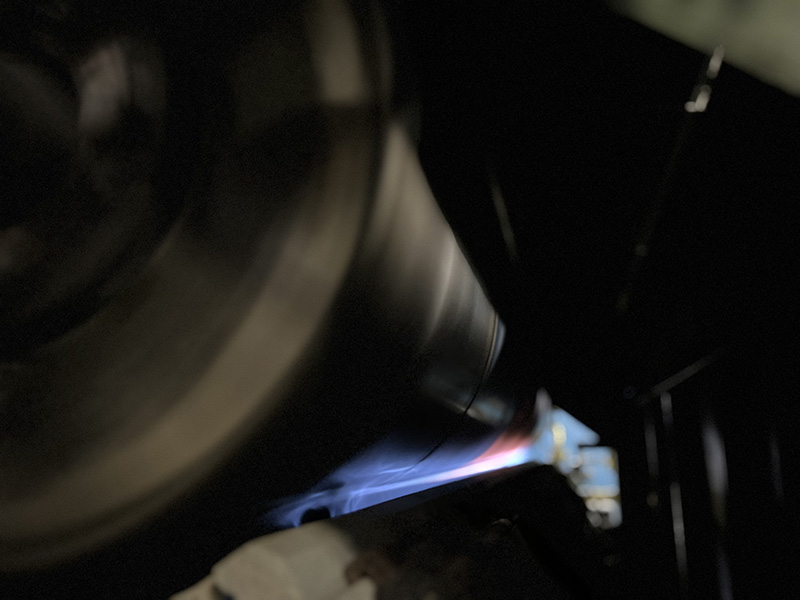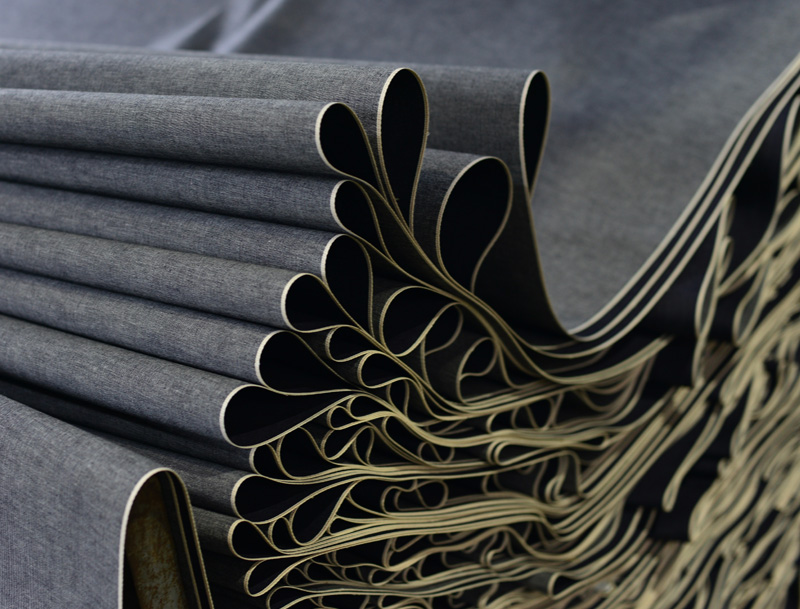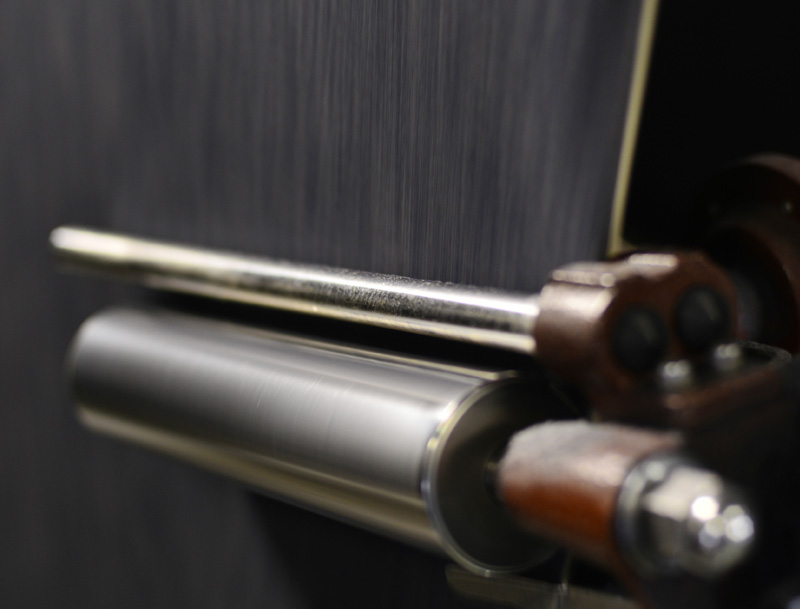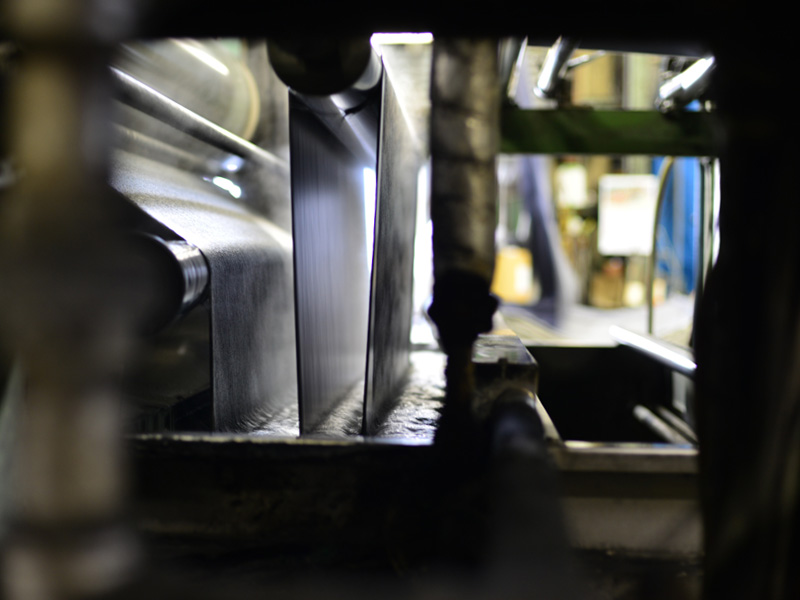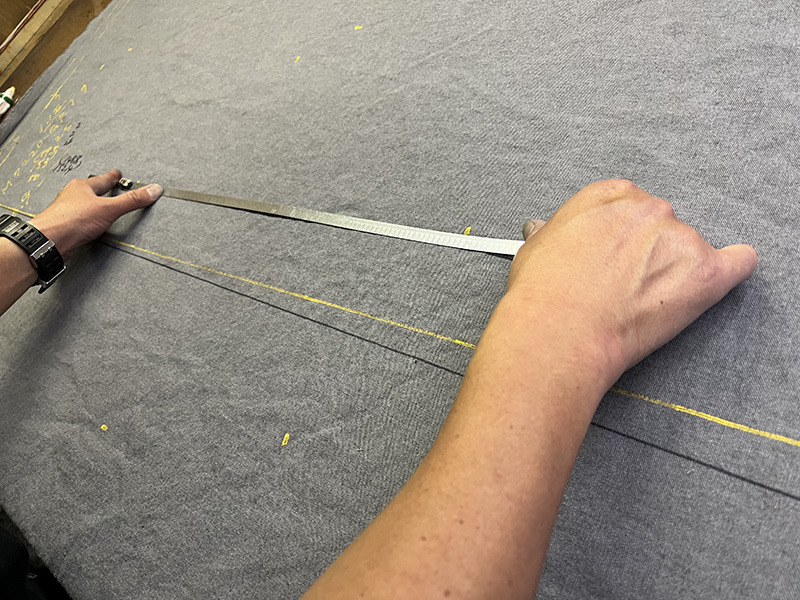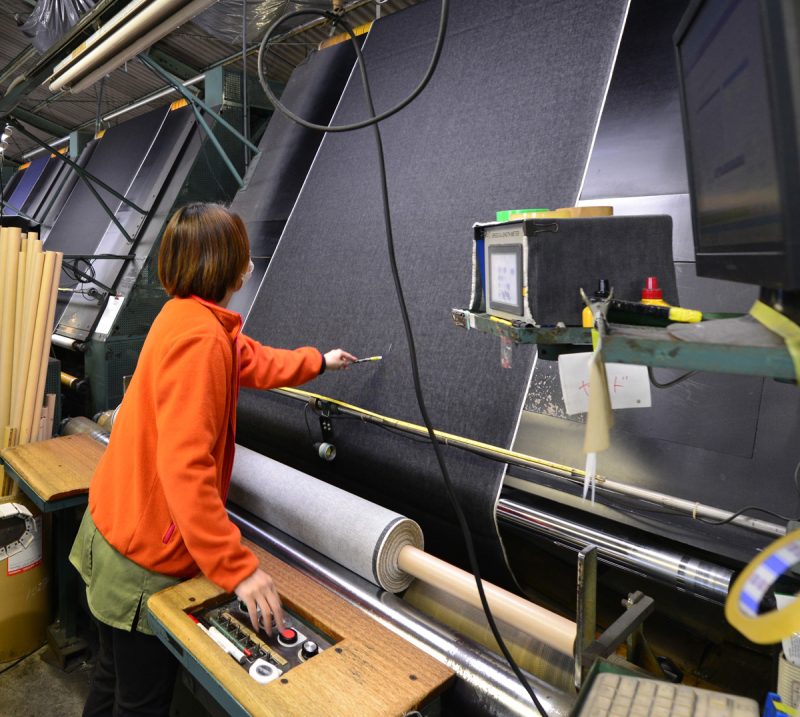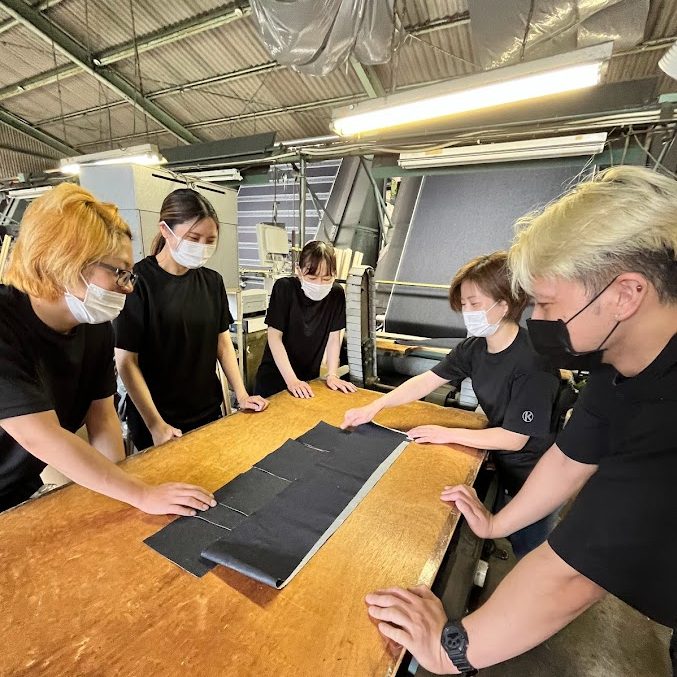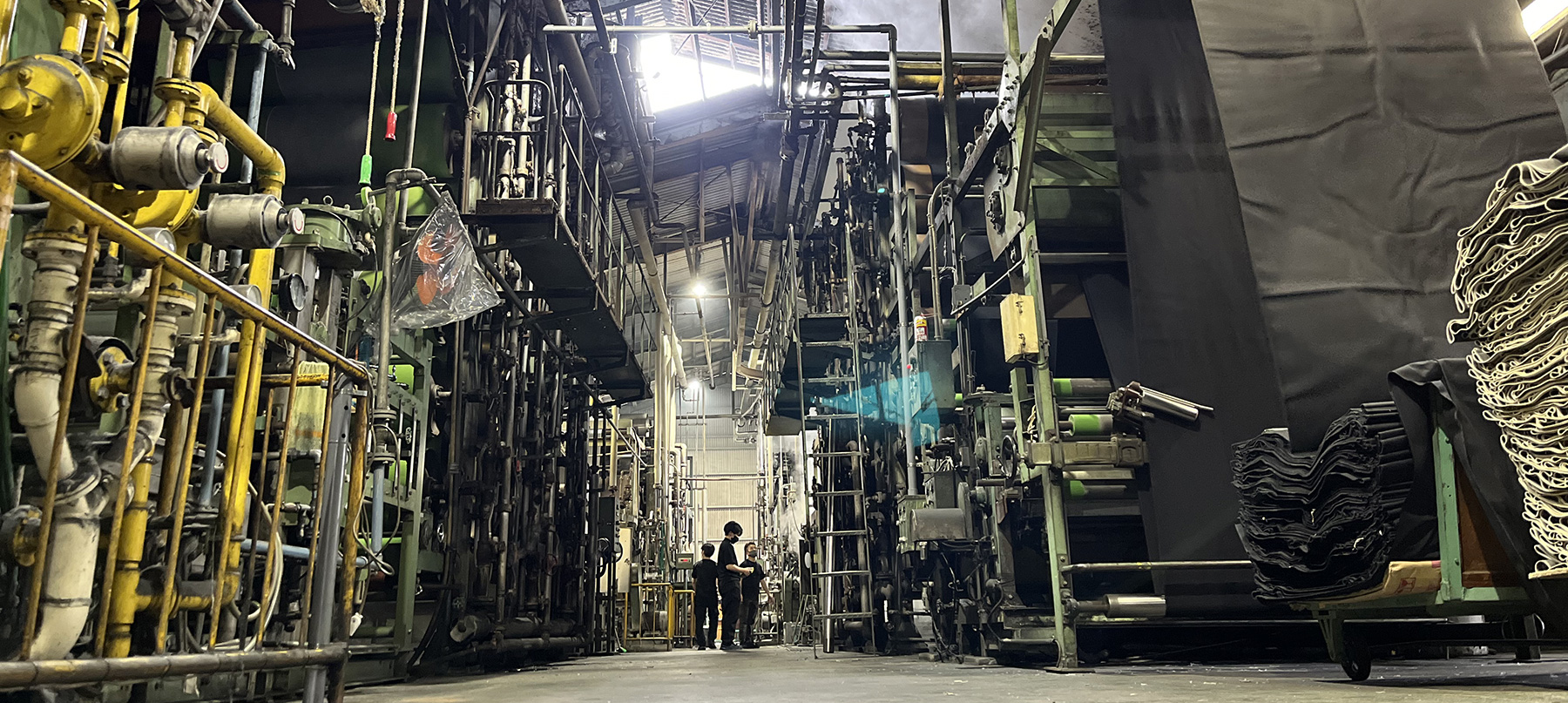
Member participating in “KURASHIKIZOME®”
KOTOSEN Co.,Ltd
The tidying process is an essential part of the fabric process, not only for denim but also for other fabrics. The tidying process improves the surface of the fabric and prevents shrinkage. The reason why jeans do not shrink or twist when washed in a washing machine is because of the tidying process. We interviewed Mr. Watanabe, president of KOTOSEN Corporation, a specialist in denim wrinkling, which adds value to woven denim by preventing shrinkage and twisting while taking advantage of the fabric’s original qualities.
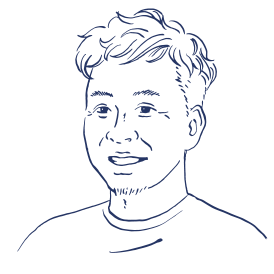
KOTOSEN Co.,Ltd
CEO
Masafumi Watanabe
Born in Kurashiki City, Okayama
Founded as a cooperative factory of KURABO Co.
KOTOSEN was founded in 1975 as a finishing processing factory that only received work from “KURABO Co”. As you may know, KURABO Co. was the top runner in supplying Japan’s first domestically produced denim “KD-8”. After that, three spinning companies, including KURABO, supplied the mass production of domestically produced denim fabrics. While the other two companies had integrated production, only KURABO had a division of labor. As a result, the techniques of each cooperating factory in dyeing, weaving, and finishing were severely evaluated and refined.
The volume of orders has continued to grow steadily since its establishment, and by 1989 the maximum processing capacity had reached 500,000 meters per month, and through further capital investment, the maximum processing capacity was increased to 1 million meters per month by 1990. However, from around 2000, jeans manufacturers began to reduce mass production and denim fabric production began to decline, and in order to fill the capacity, the company was allowed to accept processing requests from local companies.
Creating new relationships in the local area
Until then, the factory had received orders from only one company, but from there it began sales activities to acquire new orders. Fortunately, there were many more denim fabric weaving factories in the vicinity of Ibara City in Okayama Prefecture than there are today.
Although it was difficult at first as a newcomer to the market with a supply chain already in place, we gradually began to receive orders, with customers saying, “Let’s ask KOTOSEN even if it’s for a new product. Currently, we have about 20 companies, mainly in the Ibara production area, asking us to do denim Finishing processing for them.
Meeting presidents who are full of individuality was very stimulating, and I learned a lot not only about denim, but also about the way of thinking about manufacturing and the way of life as a business manager.
Since the beginning of the company, we have been improving our technical capabilities as an exclusive partner factory of “World-Class KURABO’s Denim,” which is why we have been able to gain the trust of other companies. Today, KURABO’s Denim is highly regarded overseas as well. We will continue to value our role as a cooperative factory.
Patented because it is a niche field
The process of finishing processing is essential, but it is a modest job. In order to clarify what we can do and to establish our superiority, we continued technological development and obtained two patents in 2006: “MC Processing” and “Mature Processing,” which are our original finishing processing technologies.
The “MC Process” is a process that applies an alkali treatment to the surface of denim fabrics. By doing so, the twill grain of the denim fabric stands out. In addition, the surface is given a glossy and crisp feel. This treatment is suitable for stretch denim and meets the current market needs.
The “aging process” (XB process) is a process to “make it look older. Indigo dye turns dark blue when exposed to air, but over time it discolors. Genuine vintage jeans have a slightly greenish tint to them, and this is the discoloration caused by aging. The aging process is a unique technology that reproduces this coloring while the jeans are still new.
Obtaining a patent would mean making the recipe public. You may wonder, “If I do that, won’t my original technique be imitated immediately? You might think, “Why not? However, each factory has its own technology and machinery. Therefore, there is nothing wrong with using the same recipe to produce exactly the same product. I think this is not only true for the sorting process, but also for all dyeing and weaving processes.
Involving the Next Generation in Manufacturing
For the past four years since I became president, I have been telling people that manufacturing is cool and fun! I have been telling people that manufacturing is cool and fun! What should we do to make this job more rewarding for the future generation? I am now seriously considering this question with our employees.
I have been receiving an increasing number of comments about KURASHIKIZOME® from people around me, saying, “This is a good initiative. I would like to do what one company cannot do while doing what I can do. I believe that if we can pass on the technology and engage the next generation in flexible manufacturing, materials from the production area and Japanese materials will be more appreciated around the world.

